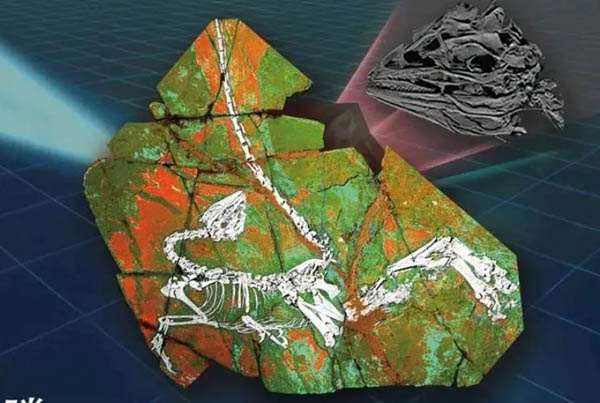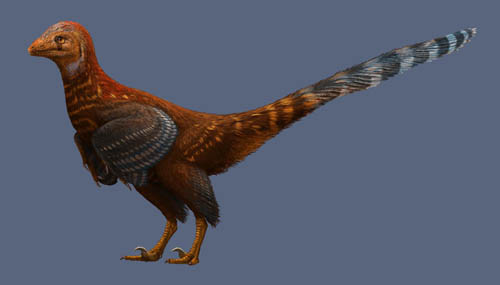On May 2, a research team composed of paleontologists from various research institutions in mainland China, Hong Kong, Canada and other places reported in the journal Nature Communication a species that lived about 125 million years ago. Dinosaur of the year - Jianianhualongs tengi. This is a small carnivorous dinosaur, slightly more than 1 meter in length, with large feathers on its front and rear limbs and tail. This discovery helps people understand the evolution process from dinosaurs to birds, especially the evolution of some important characteristics related to flight ability.
This dinosaur fossil specimen was produced in a place called Baicaigou in Yixian County, Liaoning Province, where the famous Jehol Biota fossils exist. The Dalian Xinghai Museum of Paleontology, the collection unit of this dinosaur fossil, invited researcher Xu Xing from the Institute of Vertebrate Paleontology and Paleoanthropology, Chinese Academy of Sciences, Philip Curry from the University of Alberta in Canada, Mike Pittman from the University of Hong Kong and Shenyang Normal University at the end of 2015. Hu Dongyu and other scholars from the university jointly conducted research on this important fossil specimen. According to museum director Teng Fangfang, Dalian Xinghai Museum of Paleontology has collected many fossils from the western Liaoning region. She hopes that these fossils can not only play a role in popularizing science, but also provide help for scientific research. This dinosaur fossil is just one of the research specimens provided to scientific researchers by Dalian Xinghai Museum of Paleontology in recent years.
After nearly a year of research, the researchers officially published their research. Based on its anatomical features, researchers classified the dinosaur into the troodont group. Troodontids represent one of the dinosaur groups closest to birds and are important for our understanding of the transition from dinosaurs to birds. Carnivalosaurus teng's represents a transitional type in the evolution of troodontids. By comparing with other troodontids, including Sinusonasus magnodens, the researchers believe that there was "modular evolution" in the evolution of troodontosaurs, that is, the evolution of each body part can be Divided into separate modules for independent evolution. For example, the forelimbs and girdle of Carnivalosaurus Teng's are relatively conservative with few changes, but the skull and hind limbs evolved rapidly and are closer to the advanced troodonts. Researchers have only noticed in the past that this "modular evolution" phenomenon occurs during the transformation process of major biological groups, but this study shows that "modular evolution" also exists in the evolutionary history of some small groups.
The most important information about Teng's Carnival Dragon comes from its feathers. After careful study of its preserved feather traces, researchers believe that it has feathers very similar to Archaeopteryx, showing the "four-wing" shape that was widely seen in the early evolution of birds. More importantly, the researchers found that the width of the vanes on both sides of the shaft of the tail feathers of Carnivalis teng's is different, which is similar to the asymmetric flight feathers of birds. Many studies believe that the emergence of asymmetric flight feathers is related to the emergence of flight ability. This discovery shows that asymmetric flight feathers, which are crucial for flight, appeared earlier. They probably first appeared on the tail of dinosaurs, which is of great significance for exploring how flight feathers evolved.
At present, there are still many details to be explored about how dinosaurs evolved into birds. The new species of Troodon discovered this time will help researchers gain a deeper understanding of this important event in the history of biological evolution, and also provide a basis for the development of early feathers. Evolution provides new evidence.

Figure 1 Specimens of Jianianhualongs tengi (Photo provided by Xu Xing)

Figure 2 Reconstruction of Jianianhualongs tengi (drawn by Julius T. Csotonyi)
animal tags: dinosaur evolution fossil specimen bird Archeopteryx
We created this article in conjunction with AI technology, then made sure it was fact-checked and edited by a Animals Top editor.